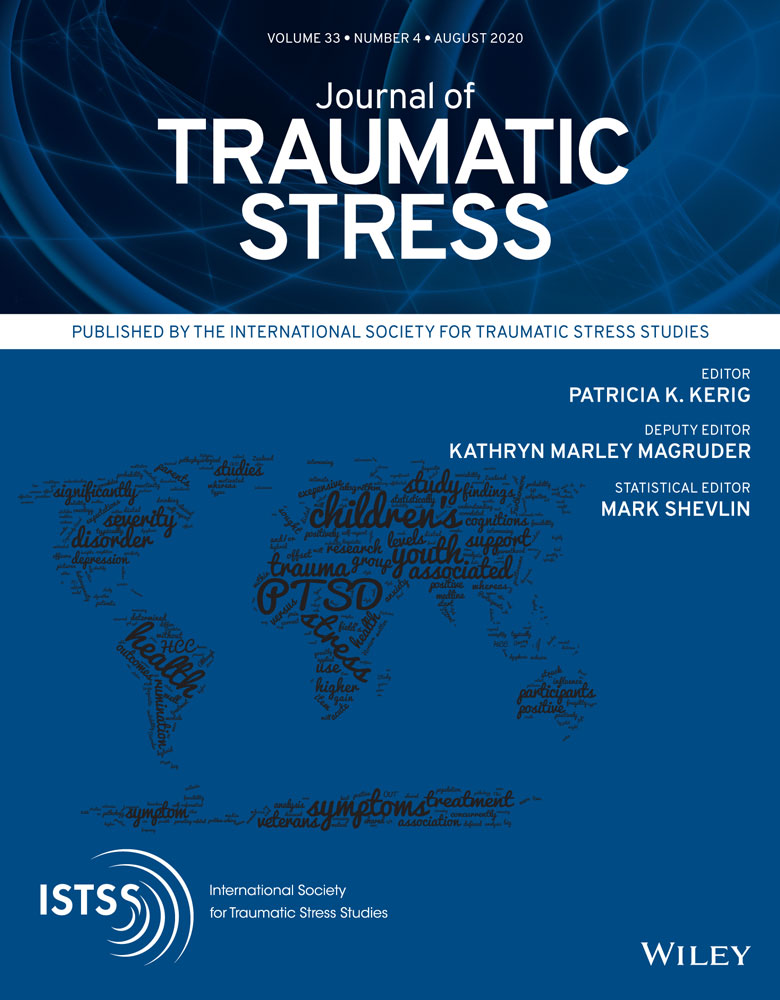A Systematic Review of Intensive Empirically Supported Treatments for Posttraumatic Stress Disorder
Nicole A. Sciarrino is now at the Ralph H. Johnson VA Medical Center, Charleston, SC. Ashlee J. Warnecke is now at the Battle Creek VA Medical Center, Battle Creek, MI.
The authors report no financial conflicts of interest. This material is based upon work supported in part by the Department of Veterans Affairs, and the Center for Innovative Treatment of Anxiety and Stress (CITRAS) of the Mental Health Care Line at the Michael E. DeBakey VA Medical Center. The views expressed in this article are those of the author(s) and do not necessarily reflect the views, position, or policy of the Department of Veterans Affairs, the South Central MIRECC, or the U.S. government.
Abstract
enVarious clinical practice guidelines for the treatment of posttraumatic stress disorder (PTSD) have consistently identified two frontline evidence-based psychotherapies (EBPs)—prolonged exposure (PE) and cognitive processing therapy (CPT)—as well as other empirically supported treatments (EST), such as eye movement desensitization and reprocessing (EMDR) and cognitive therapy for PTSD (CT for PTSD). However, researchers and clinicians continue to be concerned with rates of symptom improvement and patient dropout within these treatments. Recent attempts to address these issues have resulted in intensive, or “massed,” treatments for PTSD. Due to variability among intensive treatments, including treatment delivery format, fidelity to the EST, and the population studied, we conducted a systematic review to summarize and integrate the literature on the impact of intensive treatments on PTSD symptoms. A review of four major databases, with no restrictions regarding publication date, yielded 11 studies that met all inclusion criteria. The individual study findings denoted a large impact of treatment on reduction of PTSD symptoms, ds = 1.15–2.93, and random-effects modeling revealed a large weighted mean effect of treatment, d = 1.57, 95% CI [1.24, 1.91]. Results from intensive treatments also noted high rates of treatment completion (i.e., 0%–13.6% dropout; 5.51% pooled dropout rate across studies). The findings suggest that intensive delivery of these treatments can be an effective alternative to standard delivery and contribute to improved treatment response and reduced treatment dropout.
Resumen
esSpanish Abstracts by Asociación Chilena de Estrés Traumático (ACET)
Una Revisión Sistemática de los Tratamientos Intensivos con Apoyo Empírico para el Trastorno de Estrés Postraumático
TRATAMIENTOS INTENSIVOS CON APOYO EMPIRICO PARA TEPT
Varias guías de práctica clínica para el tratamiento del trastorno por estrés postraumático (TEPT) han identificado de manera consistente dos psicoterapias basadas en evidencia (PBE) de primera línea: exposición prolongada (EP) y terapia de procesamiento cognitivo (TPC), así como otros tratamientos con apoyo empírico (TAE), como la desensibilización y el reprocesamiento del movimiento ocular (EMDR en su sigla en inglés) y la terapia cognitiva para el TEPT (TC para el TEPT). Sin embargo, los investigadores y los médicos continúan preocupados por las tasas de mejoría de los síntomas y el abandono de los pacientes dentro de estos tratamientos. Los intentos recientes de abordar estos problemas han dado como resultado tratamientos intensivos o "masivos" para el TEPT. Debido a la variabilidad entre los tratamientos intensivos, incluido el formato de administración del tratamiento, la fidelidad al TSE y la población estudiada, realizamos una revisión sistemática para resumir e integrar la literatura sobre el impacto de los tratamientos intensivos en los síntomas del TEPT. Una revisión de cuatro bases de datos principales, sin restricciones con respecto a la fecha de publicación, arrojó 11 estudios que cumplieron con todos los criterios de inclusión. Los resultados del estudio individual indicaron un gran impacto del tratamiento en la reducción de los síntomas de TEPT, ds = 1.15-2.93, y el modelo de efectos aleatorios reveló un gran efecto medio ponderado del tratamiento, d = 1.57, IC del 95% [1.24, 1.91]. En los resultados de los tratamientos intensivos también se observaron altas tasas de finalización del tratamiento (es decir, 0% -13.6% de abandono; 5.51% de tasa de abandono agrupada en los estudios). Los hallazgos sugieren que la administración intensiva de estos tratamientos puede ser una alternativa eficaz a la administración estándar y contribuir a mejorar la respuesta al tratamiento y reducir el abandono del tratamiento.
抽象
zhTraditional and Simplified Chinese Abstracts by the Asian Society for Traumatic Stress Studies (AsianSTSS)
簡體及繁體中文撮要由亞洲創傷心理研究學會翻譯
A Systematic Review of Intensive Empirically Supported Treatments for PTSD
Traditional Chinese
標題: 針對具實證支持的密集式PTSD治療的系統性文獻回顧
撮要: 各種創傷後壓力症(PTSD)的臨床治療指引, 都一致地指出有兩種前線的實證為本心理治療(EBPs):延長暴露療法(PE)及認知整理治療(CPT), 以及其他具實證支持的療法(EST), 例如眼動身心重組療法(EMDR)及PTSD認知治療(為PTSD而設的CT)。可是, 研究員和臨床治療師仍然關注這些療法中, 症狀改善的速度及患者中途放棄治療的情況。為嘗試解決這些問題, 近期出現了密集式或「集結式」的PTSD療法。由於密集式治療具變異性, 包括在提供治療的方式、對EST的忠誠度及研究人口方面的不同, 我們便進行一個系統性文獻回顧, 總結及綜合現有文獻在密集式治療對PTSD症狀療效方面的發現。我們主要對四個資料庫進行回顧, 對研究發表日期並沒限制, 共找出11個符合所有回顧範疇的研究。獨立的研究發現反映, 治療在減輕PTSD症狀方面有大的效應)ds = 1.15–2.93(;隨機效應模型則反映, 療效的加權平均數為大)d = 1.57, 95% CI [1.24, 1.91](。密集式治療的結果, 亦反映出高水平的治療完成率)即 0%–13.6% 放棄率; 綜合所有研究所得的匯集式治療放棄率為5.51%(。結果反映, 密集式治療可以是標準治療以外有效的另類選擇, 並可提升患者的治療反應及減低治療放棄率。
Simplified Chinese
标题: 针对具实证支持的密集式PTSD治疗的系统性文献回顾
撮要: 各种创伤后压力症(PTSD)的临床治疗指引, 都一致地指出有两种前线的实证为本心理治疗(EBPs):延长暴露疗法(PE)及认知整理治疗(CPT), 以及其他具实证支持的疗法(EST), 例如眼动身心重组疗法(EMDR)及PTSD认知治疗(为PTSD而设的CT)。可是, 研究员和临床治疗师仍然关注这些疗法中, 症状改善的速度及患者中途放弃治疗的情况。为尝试解决这些问题, 近期出现了密集式或「集结式」的PTSD疗法。由于密集式治疗具变异性, 包括在提供治疗的方式、对EST的忠诚度及研究人口方面的不同, 我们便进行一个系统性文献回顾, 总结及综合现有文献在密集式治疗对PTSD症状疗效方面的发现。我们主要对四个数据库进行回顾, 对研究发表日期并没限制, 共找出11个符合所有回顾范畴的研究。独立的研究发现反映, 治疗在减轻PTSD症状方面有大的效应)ds = 1.15–2.93(;随机效应模型则反映, 疗效的加权平均数为大)d = 1.57, 95% CI [1.24, 1.91](。密集式治疗的结果, 亦反映出高水平的治疗完成率)即 0%–13.6% 放弃率; 综合所有研究所得的汇集式治疗放弃率为5.51%(。结果反映, 密集式治疗可以是标准治疗以外有效的另类选择, 并可提升患者的治疗反应及减低治疗放弃率。




